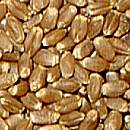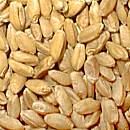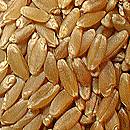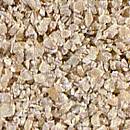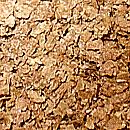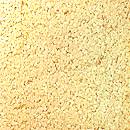Shop Products
- Food Kits
- Product Brands
- Shopping
All About Wheat | ||||||||
|
Wheat has been called the 'staff of life' for hundreds of years because of it's excellent nutrition, storability and versatility. Aside from just a couple of limiting nutrients which can easily be made up with small quantities of other foods, wheat has long been considered the focal point of home food storage. Nutritional bang for the buck, wheat is the cheapest food available in North America. Just $90 of wheat at 2001 prices will provide the energy needs, all the protein requirements and many of the vitamins and minerals an adult needs for a whole year to stay healthy. No other food can even come close to this claim for such a low price. Wheat is the most versatile whole food grown in North America and is found in a high percentage of today's prepared dishes. Wheat has been a valuable crop for many thousands of years. It is believed that wheat was first domesticated from wild grasses as long ago as 9,000 B.C. in what is present day Iraq where it's still growing wild. From Iraq, wheat spread over the ancient world. By 2,000 B.C. wheat had spread through much of Asia, Europe and North Africa. Slowly during this same period, the different varieties of wheat we know so well today started to emerge - the hard and soft wheats and durum. Around 2,500 B.C. the Egyptians learned how to exploit the gluten in wheat flour making the first raised breads from yeast. This discovery alone pushed wheat to the forefront ahead of the other prized grains of the day, oats, millet, rice and barley. The Egyptians grew huge amounts of wheat. They eventually started exporting wheat to other parts of the new world. This turned into such a huge trade that massive sailing barges were built, large enough to carry 1,300 tons of grain in their holds. Their main trade route plied between Alexandria and Rome. After the fall of Rome, these massive sailing ships disappeared and nothing of their size was again seen until the early 19th century. Pasta, first believed to be invented in China, quickly became a mainstay in Rome and the rest of Italy where it remains an important staple item to this day. Wheat came to the Americas with Christopher Columbus and again by the Pilgrims in 1620. Through the centuries, wheat remained a labor intensive crop to grow and harvest but all of this changed in 1831 when Cyrus McCormick's binding machine went into production which was followed by the early threshing machine. Today, these two pieces of equipment are combined into one machine in the form of the modern combine which can do the work that took hundreds of men to accomplish with a scythe, flail and the wind. The different varieties of wheat grown today probably show little resemblance to wheat grown thousands of years ago. Plant breeders have had hundreds of years to carefully modify this grain to produce quicker in areas of short summers, be more drought resistant and have higher yields. Each variety has been enhanced with the positive characteristics for it's intended use. Wheat's productivity has been tweaked to the point that a year's harvest on one small acre of wheat can make all the bread a family of 4 eats in a ten year period! Wheat is the grain of versatility. More foods have their origins in wheat than any other single food source contributing to 10-20% of the daily energy needs of people in over 60 countries. Wheat's secret to it's vast popularity lies in it's high gluten content - higher than any other grain. Gluten comes from the two amino acids, Gliadin and Glutenin, which make up about 80-85% of the protein in the hard wheat varieties. Gliadin and glutenin are also found in rye, oats and barley but at much lower levels. Gluten, when mixed with water, forms stringy, elastic strands which permits the dough to trap expanding gasses produced by yeast. This permits light, fluffy breads. Because the amino acids forming gluten make up so much of the protein in wheat, you can generally determine the gluten strength of hard wheat varieties by the total protein content. Although it's not true in all cases, generally speaking, when the protein content rises, the gluten content follows it. If you are going to mix other, non-gluten or low gluten flours with your wheat flour to make yeast breads, be sure to mix them with high gluten wheat flour. Gluten makes dough ‘tough' which is good for bread flours but not good for pastry and cake flours. Refined gluten such as our Vital Wheat Gluten has a gluten content of around 45%. Next in gluten content comes flours made from the high protein hard wheats which contain gluten levels of 12.5-13.5%. All purpose flour contains about 10-12% gluten and is actually a mix of high and low gluten wheat flours. Pastry flour contains about 9-10% gluten and lastly, cake flour contains about 7-9%. Both these last flours are made from soft wheats. Flour high in gluten content doesn't make very good cakes as the cake would lose it's soft, easily cuttable characteristics. Good angel food cake requires the lowest gluten flours. Wheat is grown over much of North America but different types of wheat produce better in different parts of the country. The soft wheats which produce low gluten flours are grown east of the Mississippi River and in the Pacific Northwest where the humidity is usually high and temperatures remain elevated during the night. The hard wheats require low humidity, hot days and cool nights to develop their high protein levels. The Intermountain West has the best conditions for this although Kansas is also a major producer of the hard wheats. Perhaps the best areas, however, are the mountain valleys that don't freeze too early in the fall of the year or the plains of Montana and Alberta where hot days, cool nights and low humidity are the norm. These are the areas where we get our hard wheats for bread making. There are two major groups of wheats - the hard and soft varieties with a third major division for durum wheat. The hard wheats generally contain smaller kernels and are harder than soft wheat kernels. They contain high protein and gluten levels primarily designed for making bread flours. Depending on variety and growing conditions, hard wheats can have vasty different protein levels. For bread making, your wheat should have a minimum of 12% protein. The hard varieties of wheat can have protein levels up to 15 or 16%. Generally speaking for bread making, the higher the protein content the better. The two main types of hard wheat are the hard red and the hard white varieties. Hard white wheat is a relative new-comer that tends to produce a lighter colored, more spongy loaf of bread and because of this, it is gaining quick popularity among home bread makers. However, we have talked with bread makers who prefer the hard red wheat for it's more robust flavor and more traditional textured loaf of bread it makes. The soft wheats are just that - not quite so hard. If you want to roll your own wheat, you should buy soft wheat. The hard wheats tend to crack and break in the flaking machine. Containing less protein and gluten, soft wheat flour is ideally suited for making biscuits, pastries and quick breads. Typical protein levels for the soft wheats are 9-11%. Flour made from the soft wheats can also be used for cake flours. If you want a really low gluten cake flour, mix your soft wheat flour with other low gluten flours such as oat flour, barley flour of buckwheat flour. Durum wheat is a botanically separate species from the hard and soft wheat varieties. It's kernels are a little larger and are shaped a bit differently than the other wheats. Durum wheat has very hard, high protein kernels but it's the wrong kind of protein to form a strong gluten. Durum has been used for centuries to make pasta; whether it's macaroni, egg noodles or spaghetti noodles. These different wheats can be further broken down into the winter and spring wheats. Winter wheats are planted in the fall of the year and must begin growing before winter comes. The top 'winter kills,' but just as soon as spring arrives, they jump back into life. Winter wheats can be harvested earlier in the year than spring wheats. Some people claim that hard red winter wheat has a better protein content than the hard spring wheats. However, this is not necessarily so. It all depends on the growing conditions and farming methods. The spring wheats are planted in the spring of the year then are harvested in the fall and can have excellent protein profiles. For example, all hard white wheat the bakers love so much is a spring wheat. We know of no food that stores as long as wheat. Stored in a cool, dry place, wheat has been known to store for 30 years. Prepared for long-term storage, wheat will last even longer than this if carefully stored. Modern food storage methodology suggests, however, that you rotate your wheat like you should rotate all your other foods to keep it as fresh as possible. There are a couple of fractional wheat products available aside from white flour we'd like to mention; wheat bran, wheat flakes, wheat germ and germade. Wheat Bran comes from the outer layers of the wheat kernel and contains 43% insoluble fiber. It also contains substantial amounts of protein, carbohydrates, and is quite high is some of the vitamins and minerals. It tastes great in muffins and other high fiber foods and is very effective as a cholesterol reducing agent as well as promoting regularity. Wheat germ contains just the embryo part of the wheat kernel which has been flattened in a roller. It's then toasted because of it's high oil content to extend it's shelf life. Wheat germ, a compressed source of nutrition, contains most of the vitamins and minerals found in the seed. The wheat germ has a wonderful, nutty flavor and goes well in granola or baked into breads or breakfast cereal. Wheat flakes are made by rolling wheat in a flaker and cracked wheat is made by cracking open the wheat kernels. Both of these items can be cooked as a breakfast cereal. The wheat flakes also go well in breads, casseroles and granola. |
